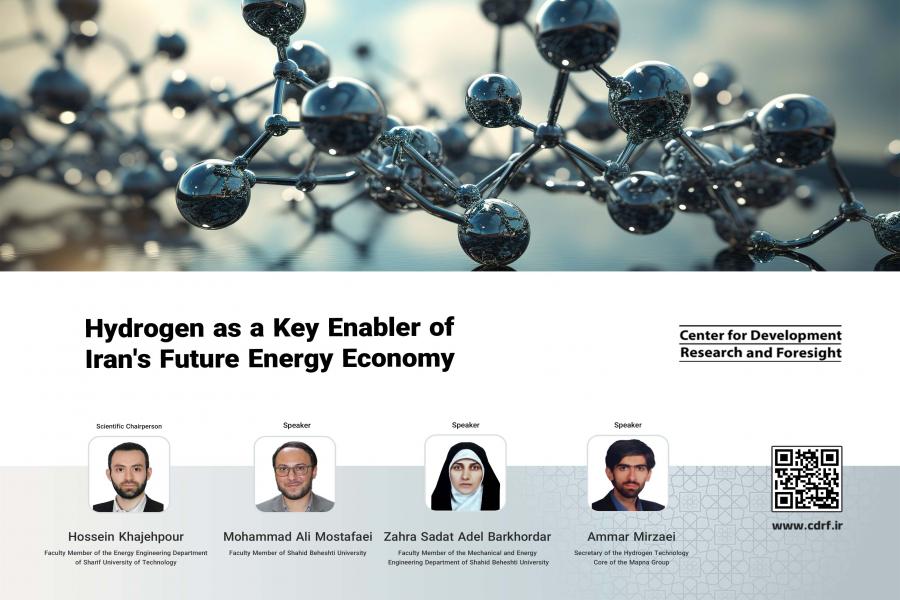
-
بررسی آییننامهها و دستورالعملهای برنامه هفتم پیشرفت
-
بررسی عوامل موثر بر افزایش تصادفات و تلفات جادهای و سوانح رانندگی و دادهکاوی تلفات انسانی
-
سازماندهی و بازآرایی فضایی آموزش عالی کشور
-
به روز رسانی سند ملی آمایش سرزمین
-
انجام مطالعات مناطق آزاد به عنوان نواحی پیشران اقتصادی کشور
-
اصلاح ساختار بودجه و پیاده سازی نظام یکپارچه مدیریت اطلاعات مالی دولت (IFMIS)

Could hydrogen be the key to unlocking Iran's clean energy future? That's the question experts tackled at the recent conference titled “Hydrogen as a Key Enabler of Iran's Future Energy Economy” hosted by the Center for Development Research and Foresight (CDRF).
The focus? Hydrogen's potential as a game-changer in the fight against climate change. Unlike fossil fuels, hydrogen burns clean, emitting only water vapor. This clean-burning technology could significantly reduce Iran's greenhouse gas emissions and improve air quality in its major cities.
But hydrogen's benefits go beyond the environment. The gas has the potential to revolutionize various industries. Imagine steel production without coal-fired furnaces. Or picture powering oil and gas operations with a fuel source that utilizes existing infrastructure. These are just a few possibilities hydrogen presents.
However, the road to a hydrogen-powered economy isn't without its obstacles. Water scarcity poses a significant challenge. Traditional hydrogen production methods rely heavily on electrolysis, a process that uses significant amounts of water. In a country like Iran, where water resources are already strained, alternative methods like thermochemical processes might be necessary.
Building the infrastructure needed for a hydrogen economy is another hurdle. Extensive pipelines for transportation, dedicated fueling stations for hydrogen-powered vehicles, and specialized storage facilities – all will be crucial for widespread adoption. Investing in this infrastructure will be key for Iran to truly tap into hydrogen's potential.
The human element is also crucial. Transitioning to a hydrogen economy requires a skilled workforce. Technicians and experts with specialized knowledge in hydrogen production, storage, and utilization will be the backbone of this new energy era. Universities and technical institutions will need to adapt their curriculums to equip the next generation with the skills necessary to navigate this energy revolution.
The conference also painted a picture of cautious optimism. While challenges exist, hydrogen presents a compelling long-term solution for Iran's energy future. Developing efficient production methods, prioritizing infrastructure development, and investing in workforce training will determine whether Iran can unlock the true potential of hydrogen and forge a cleaner, more sustainable future.



